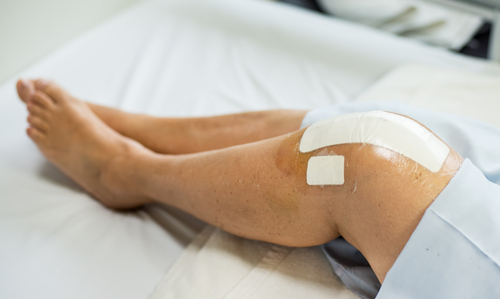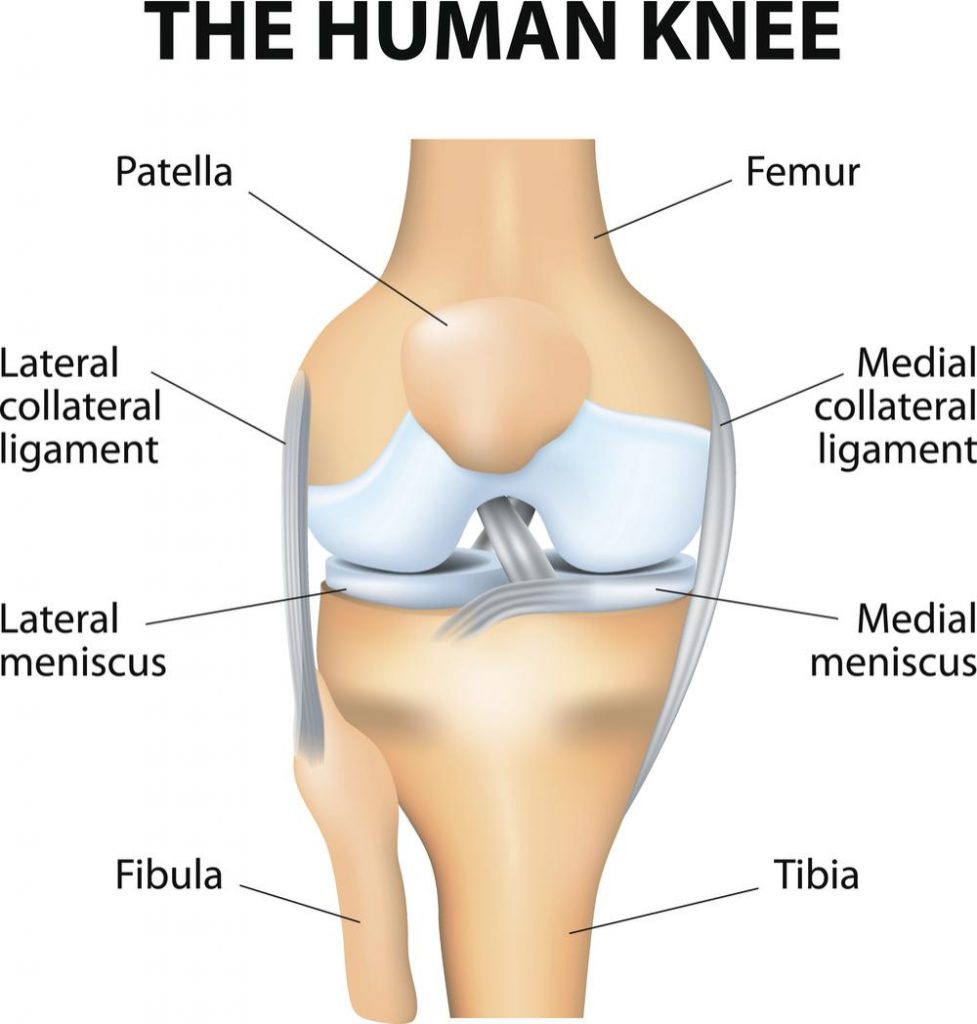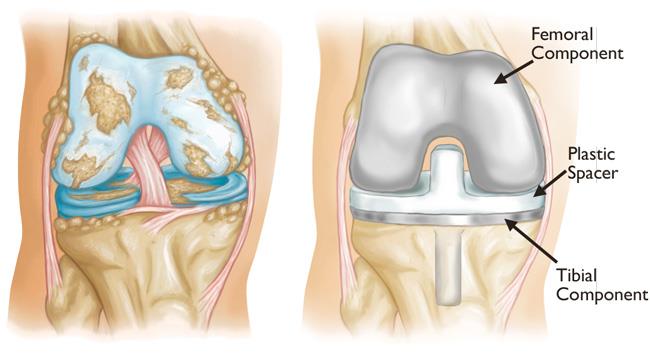What is a Total Knee Replacement?
If you’ve been struggling with knee pain for a long period of time and physiotherapy and other conservative measures haven’t helped, your doctor may decide you need your knee replacing. The most common reason for undergoing a total knee replacement is because of osteoarthritis, a condition where the cartilage in the knee joint becomes worn away, causing inflammation, pain and loss of movement. Other types of arthritis can cause damage in the knee that may warrant a total knee replacement, as could damage caused by a physical trauma (such as a fall or car accident).
The decision to undergo a total knee replacement is something which should never be taken lightly, and it is important that the individual realise that undergoing a total knee replacement is only half the battle; it is imperative that the patient receive physiotherapy rehabilitation afterwards to help achieve a successful outcome from surgery.
Anatomy of the knee
The knee is the largest joint in the body, and having good knee health is required for all tasks that involve standing and moving. If your knee becomes damaged, a lot of everyday activities become limited and more difficult to achieve.
The knee joint is made up of 3 bones which join together. These are the ends of the femur (thigh bone) and tibia (shin bone), and the back of the kneecap (patella). The ends of these bones are all covered in cartilage, which acts as a shock absorber and prevents the bones from rubbing on each other. There are several ligaments around the knee which provide stability, as well as the meniscus, which are large ‘C’ shaped cartilage which adds extra shock absorption and stability to the joint.
Typically in the patient who requires a total knee replacement, the cartilage which sits between the bones in the knee have worn away through wear and tear, leading to the bones in the knee joint rubbing on each other and causing damage, pain and inflammation.
What happens during total knee replacement surgery?
When you undergo knee replacement surgery, the surfaces of the bones that make up your knee joint (the femur and tibia) are replaced. This is done to clear away any damaged cartilage, as well as a small amount of underlying bone which has become damaged secondary to osteoarthritis. Once the cartilage and bone is removed, metal implants are inserted to replace the damaged area and recreate the surfaces of the knee joint. These are typically cemented into place. The back of the knee cap may be ‘smoothed off’ to remove any damaged cartilage that could be present, although it is important to note that not all surgeons will perform this. Finally, a medical-grade plastic spacer is inserted between the metal implants, which helps the knee to bend and straighten properly once you begin your rehab.
What can I expect after knee surgery?
It is very normal to experience pain, swelling and limited mobility for 6-8 weeks following your surgery. Your incision scar, which runs straight down the middle of your knee, will initially have stitches in, which will need to be removed a few weeks post-op. It is important to look for signs of infection in your scar following your surgery, and if you notice any weeping coming from the area, or excessive redness around the scar, you should contact your family physician and have them inspect it for you.
You may need to use a cane or a walking aid to start with, although typically you are allowed to put all your weight on your replaced knee and start bending and using it immediately.
As mentioned before, it is imperative that you undergo physiotherapy following your surgery. If you do not undergo physiotherapy, you run the risk of not achieving full movement of your knee, which can result in a stiff and painful knee and limited mobility. It is also very common for muscles in your leg, such as those that move the knee and hip, to become weak and tight following the surgery, which in turn can lead to pain and the inability to walk properly.
A physiotherapist is able to guide you through your recovery, and will be able to show you appropriate stretching, strengthening and balancing exercises to help you recover to your maximum potential following surgery. In our clinic, all of our physiotherapists have experience in working with patients who have undergone total knee replacements, and we are able to organize appointments for you which are convenient for your schedule. If you have had a total knee replacement in Penticton and need to arrange an appointment with a physiotherapist, or would like further information, please call us today at 250-493-1152, or book online by clicking here.







